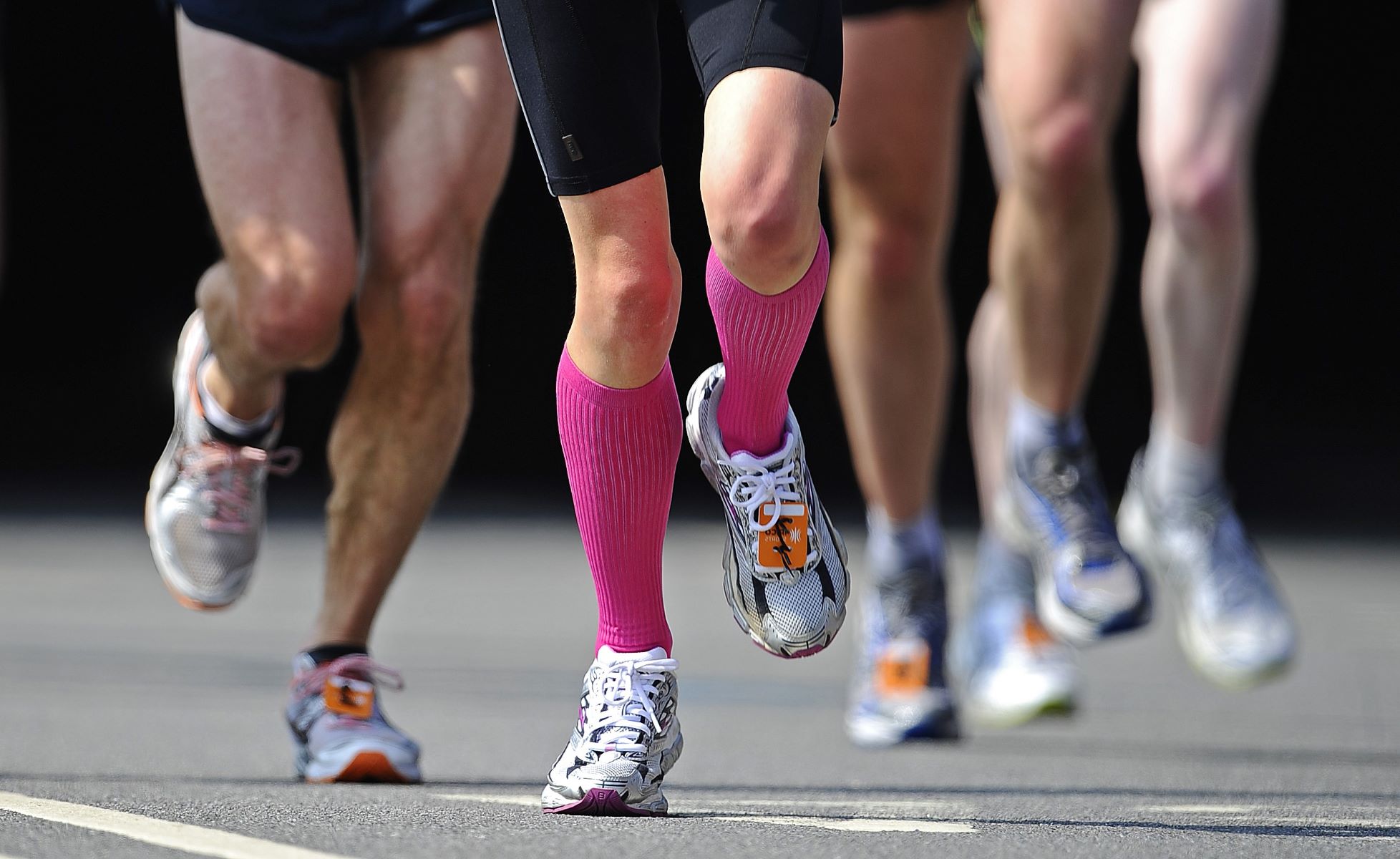Home>Training & Techniques>Tips For Tapering Before Your Upcoming Marathon Or Half Marathon


Training & Techniques
Tips For Tapering Before Your Upcoming Marathon Or Half Marathon
Published: March 4, 2024
Get ready for your marathon or half marathon with expert tips on tapering and training techniques. Maximize your performance and minimize the risk of injury.
(Many of the links in this article redirect to a specific reviewed product. Your purchase of these products through affiliate links helps to generate commission for Therunningadvisor.com, at no extra cost. Learn more)
Table of Contents
Importance of Tapering
Tapering, the gradual reduction of training intensity and volume leading up to a race, is a critical phase in a runner's preparation. This period, typically lasting one to three weeks, allows the body to recover from the rigors of training while maintaining fitness levels. The importance of tapering cannot be overstated, as it directly impacts race performance and overall well-being on race day.
Tapering serves several key purposes, all of which contribute to optimal race-day performance:
-
Physical Recovery: The body undergoes significant stress during intense training. Tapering allows for muscle repair, glycogen replenishment, and reduction of inflammation, leading to fresher legs and improved overall physical readiness.
-
Injury Prevention: By reducing training volume, tapering provides an opportunity for niggling injuries to heal. This can help prevent exacerbation of existing issues and reduce the risk of sustaining new injuries before the race.
-
Mental Refreshment: Endurance training can be mentally taxing. Tapering provides a mental break, allowing runners to recharge and approach race day with renewed focus and enthusiasm.
-
Performance Optimization: Research has shown that tapering can lead to significant improvements in race performance. By allowing the body to fully recover, runners can achieve peak fitness and performance levels on race day.
-
Reduced Fatigue: Tapering helps to reduce accumulated fatigue from training, resulting in increased energy levels and improved readiness for the demands of race day.
It's important to note that tapering is not synonymous with complete rest. Instead, it involves a gradual reduction in training volume and intensity while maintaining some level of activity to keep the body primed for the upcoming race. Striking the right balance during the tapering phase is crucial, as over-tapering can lead to detraining effects, while under-tapering may result in residual fatigue and reduced performance potential.
In essence, tapering is a strategic and essential component of race preparation. It allows the body to recover, reduces the risk of injury, refreshes the mind, and ultimately sets the stage for peak performance on race day. Embracing the tapering phase with intention and mindfulness can significantly enhance the overall race experience and increase the likelihood of achieving personal goals.
How to Adjust Your Training Schedule
As race day approaches, it's crucial to make strategic adjustments to your training schedule to ensure that you arrive at the starting line feeling strong, fresh, and prepared. Tapering involves a delicate balance of reducing training volume and intensity while maintaining a level of activity to sustain fitness and readiness. Here's a comprehensive guide on how to effectively adjust your training schedule during the tapering phase:
Gradual Reduction in Mileage and Intensity
Begin by gradually reducing your weekly mileage and the intensity of your workouts. This reduction should be progressive, typically starting around two to three weeks before race day. For long-distance races such as marathons, it's common to reduce mileage by 20-25% each week during the tapering phase. This gradual decline allows the body to recover while maintaining cardiovascular fitness and muscle strength.
Maintain Key Workouts
While overall mileage and intensity decrease, it's important to maintain key workouts that simulate race conditions. This may include maintaining a long run, albeit at a reduced distance, and incorporating shorter, faster-paced intervals to keep the legs sharp. These key workouts serve to reinforce muscle memory and maintain race-specific fitness without inducing excessive fatigue.
Focus on Quality Over Quantity
During the tapering phase, prioritize the quality of your workouts over the quantity. This means paying close attention to running form, pacing, and mental focus during each session. Emphasize the importance of running efficiently and effectively, rather than pushing for additional miles or speed. This shift in focus allows for physical and mental rejuvenation while fine-tuning race-specific skills.
Adequate Rest and Recovery
Incorporate additional rest and recovery days into your tapering schedule. This may involve reducing the frequency of training sessions and allowing for extended periods of rest between workouts. Adequate rest is essential for muscle repair, glycogen replenishment, and overall recovery, all of which are vital for arriving at the starting line feeling fresh and energized.
Mental Preparation
Use the tapering phase to engage in mental preparation techniques such as visualization, positive self-talk, and race strategy planning. Visualizing successful race scenarios and mentally rehearsing your race plan can help build confidence and reduce pre-race anxiety. Additionally, focusing on positive affirmations and reinforcing mental toughness can enhance your overall race-day mindset.
Listen to Your Body
Throughout the tapering phase, it's crucial to listen to your body and be responsive to any signs of fatigue or lingering discomfort. If you experience any unusual pain or excessive fatigue, be willing to adjust your training schedule accordingly. This may involve additional rest days or modifications to your workouts to prioritize recovery and injury prevention.
By implementing these strategic adjustments to your training schedule during the tapering phase, you can optimize your physical readiness, mental preparedness, and overall race-day performance. Embracing the tapering process with intention and mindfulness sets the stage for a successful and fulfilling race experience.
Nutrition and Hydration During Tapering
Proper nutrition and hydration play a pivotal role in supporting the body's adaptation to the tapering phase and optimizing race-day performance. As training volume decreases during tapering, adjustments in dietary intake and hydration practices are essential to facilitate recovery, maintain energy levels, and support overall well-being.
Balanced Nutrition
Maintaining a well-balanced diet rich in essential nutrients is crucial during the tapering phase. Emphasize the consumption of lean proteins, complex carbohydrates, healthy fats, and a variety of fruits and vegetables to provide the body with the necessary building blocks for muscle repair and glycogen replenishment. Incorporating nutrient-dense foods such as quinoa, sweet potatoes, leafy greens, and lean meats can help sustain energy levels while promoting recovery.
Adequate Hydration
Proper hydration is paramount for supporting physiological functions and optimizing performance. While training volume decreases, it's important to maintain a consistent approach to hydration. Aim to consume adequate water throughout the day, paying attention to thirst cues and urine color as indicators of hydration status. Additionally, electrolyte balance is crucial, especially as sweat rates may remain relatively high despite reduced training intensity. Consider incorporating electrolyte-rich beverages or natural sources of electrolytes to support hydration needs.
Nutrient Timing
Strategic nutrient timing can further enhance the benefits of tapering. Focus on consuming a balanced meal or snack that combines carbohydrates and proteins within the post-workout recovery window. This aids in muscle glycogen replenishment and supports muscle repair and growth. Additionally, consuming a pre-workout snack or meal rich in easily digestible carbohydrates can provide the necessary fuel for key workouts during the tapering phase.
Micronutrient Support
Incorporating micronutrient-rich foods and, if necessary, supplements can help bolster the body's immune function and overall well-being during tapering. Nutrients such as vitamin C, vitamin D, zinc, and antioxidants play a vital role in supporting immune health and reducing the risk of illness or infection, which can be particularly detrimental in the lead-up to a race.
Individualized Approach
It's important to recognize that individual nutrition and hydration needs may vary. Factors such as body composition, sweat rate, and dietary preferences should be taken into account when tailoring nutrition and hydration strategies during tapering. Consulting with a sports nutritionist or registered dietitian can provide personalized guidance to ensure that dietary choices align with individual needs and goals.
By prioritizing balanced nutrition, adequate hydration, strategic nutrient timing, and micronutrient support, runners can optimize their physical readiness, support recovery, and enhance overall race-day performance during the tapering phase. Embracing a holistic approach to nutrition and hydration sets the stage for a successful and fulfilling race experience.
Mental Preparation for Race Day
Mental preparation is a fundamental aspect of race-day readiness, wielding a profound influence on performance outcomes. As runners approach the culmination of their training journey, the tapering phase provides an opportune moment to cultivate a resilient and focused mindset. The psychological fortitude developed during this phase can significantly impact race-day performance and overall experience.
Visualization emerges as a potent tool in mental preparation, allowing runners to vividly imagine themselves navigating the race course with strength and determination. By visualizing successful race scenarios, including overcoming challenges and maintaining a steady pace, runners can instill confidence and familiarity with the race environment. This mental rehearsal serves to reduce pre-race anxiety and fortify a positive mindset, fostering a sense of preparedness and control.
Positive self-talk stands as a cornerstone of mental preparation, shaping the internal dialogue that accompanies the physical exertion of race day. Affirming statements and encouraging self-dialogue can bolster confidence, mitigate self-doubt, and cultivate a resilient mindset. Embracing a constructive inner narrative empowers runners to navigate the inevitable discomforts of the race with determination and resolve.
Strategic race strategy planning during the tapering phase allows runners to approach race day with a clear and focused mindset. By meticulously outlining pacing strategies, fueling plans, and contingency measures, runners can alleviate uncertainty and enhance mental readiness. This proactive approach fosters a sense of control and preparedness, mitigating race-day stress and promoting mental resilience.
Embracing mindfulness practices during the tapering phase can further fortify mental preparedness for race day. Engaging in activities such as meditation, deep breathing exercises, or yoga can cultivate a calm and centered mindset, equipping runners with the tools to manage pre-race jitters and maintain focus amidst the excitement of race day.
In essence, the tapering phase serves as a pivotal opportunity for runners to cultivate mental resilience, confidence, and focus in preparation for race day. By harnessing the power of visualization, positive self-talk, strategic planning, and mindfulness practices, runners can optimize their mental preparedness, ultimately enhancing their race-day performance and overall experience.
Recovery Strategies After the Race
The completion of a marathon or half marathon marks the culmination of months of dedicated training and the fulfillment of a significant athletic achievement. As runners cross the finish line, their bodies have undergone immense physical exertion, and the immediate post-race period becomes a critical phase for recovery and rejuvenation. Implementing effective recovery strategies is paramount in promoting muscle repair, replenishing energy stores, and supporting overall well-being following the demands of race day.
Immediate Rehydration and Refueling
Upon crossing the finish line, prioritizing immediate rehydration and refueling is essential. Replenishing fluid losses and glycogen stores is crucial for kickstarting the recovery process. Consuming a combination of water and electrolyte-rich beverages can aid in rehydration, while consuming easily digestible carbohydrates and proteins within the first 30 minutes post-race supports glycogen replenishment and muscle repair.
Read more: Determining An Optimal Half Marathon Time
Gentle Cooling Down and Stretching
Engaging in a gentle cooldown routine and incorporating light stretching post-race can aid in promoting blood circulation, alleviating muscle tension, and supporting the body's recovery process. Light jogging or walking for a few minutes, followed by gentle stretching of major muscle groups, can help reduce muscle soreness and stiffness while facilitating the removal of metabolic byproducts accumulated during the race.
Rest and Active Recovery
Following the immediate post-race period, prioritizing rest and active recovery is essential for allowing the body to recuperate. Adequate sleep and rest in the days following the race are crucial for muscle repair and overall recovery. Additionally, incorporating low-impact activities such as walking, swimming, or gentle yoga can promote blood flow, alleviate muscle soreness, and support the gradual return to regular training.
Nutrient-Dense Meals and Hydration
In the days following the race, focusing on nutrient-dense meals that include a balance of lean proteins, complex carbohydrates, and healthy fats supports ongoing muscle repair and replenishment. Adequate hydration remains paramount, as the body continues to recover from the physical demands of the race. Paying attention to hydration needs and consuming a variety of nutrient-rich foods aids in promoting overall recovery and well-being.
Reflect and Rejuvenate
The post-race period provides an opportunity for runners to reflect on their achievements, celebrate their accomplishments, and rejuvenate both physically and mentally. Embracing a positive and reflective mindset, acknowledging the hard work and dedication invested in training, and allowing time for mental and emotional rejuvenation are integral aspects of the recovery process.
In essence, effective recovery strategies following a marathon or half marathon are essential for promoting muscle repair, replenishing energy stores, and supporting overall well-being. By prioritizing immediate rehydration and refueling, engaging in gentle cooldown and stretching, embracing rest and active recovery, focusing on nutrient-dense meals and hydration, and allowing time for reflection and rejuvenation, runners can optimize their post-race recovery and set the stage for continued success in their athletic pursuits.












